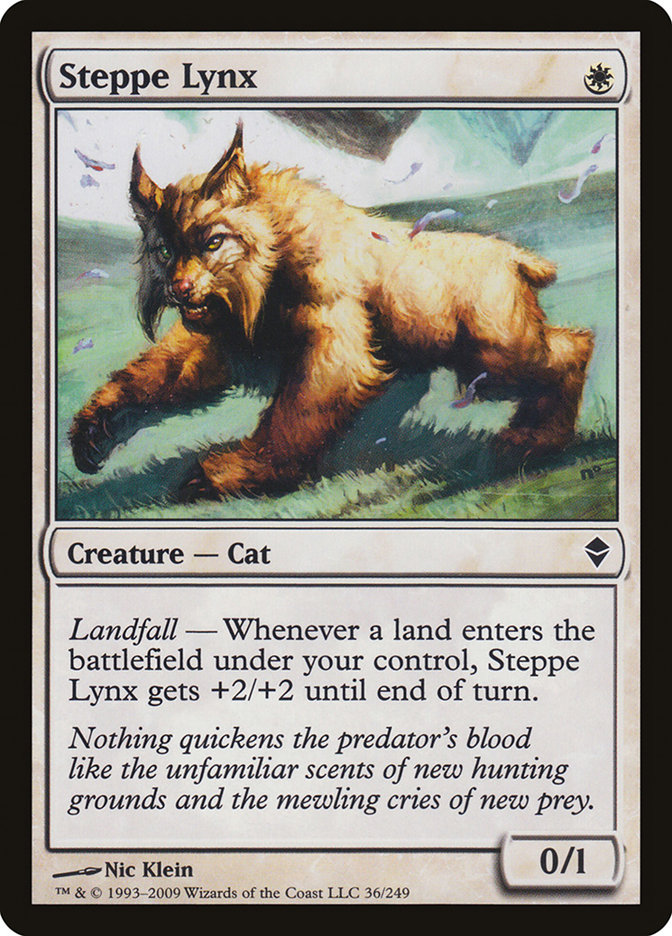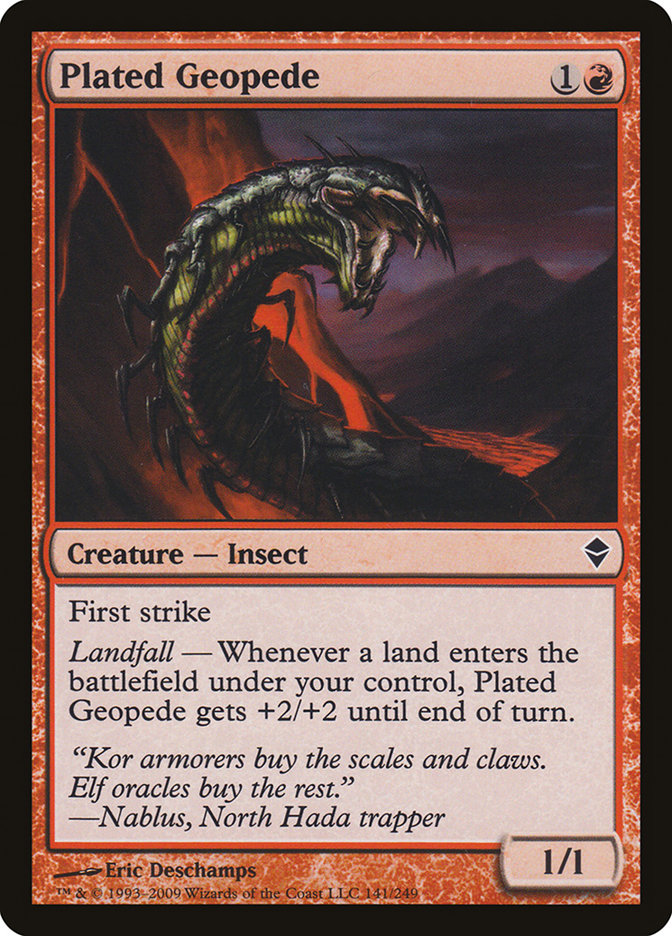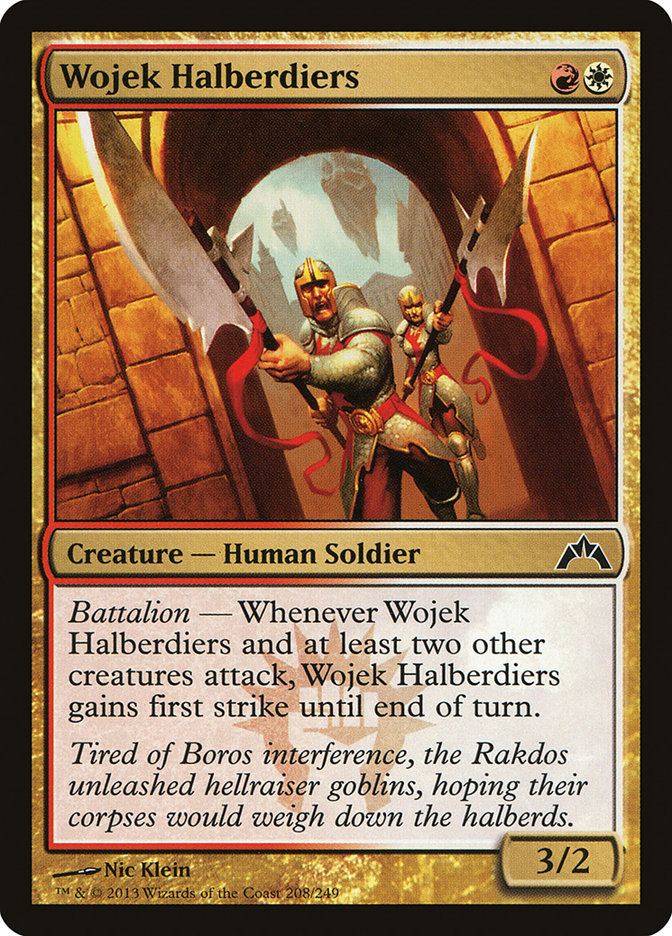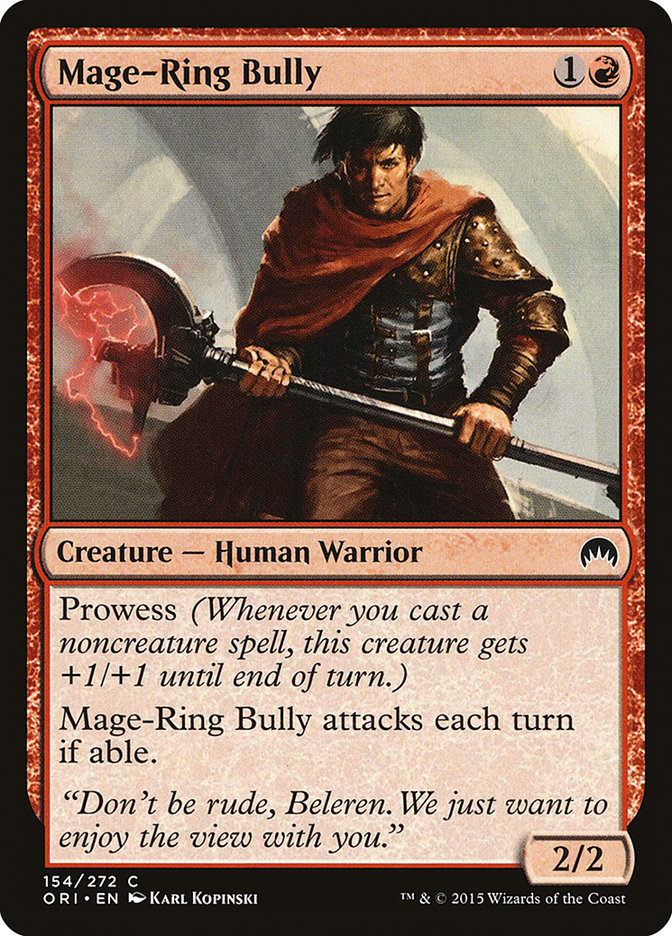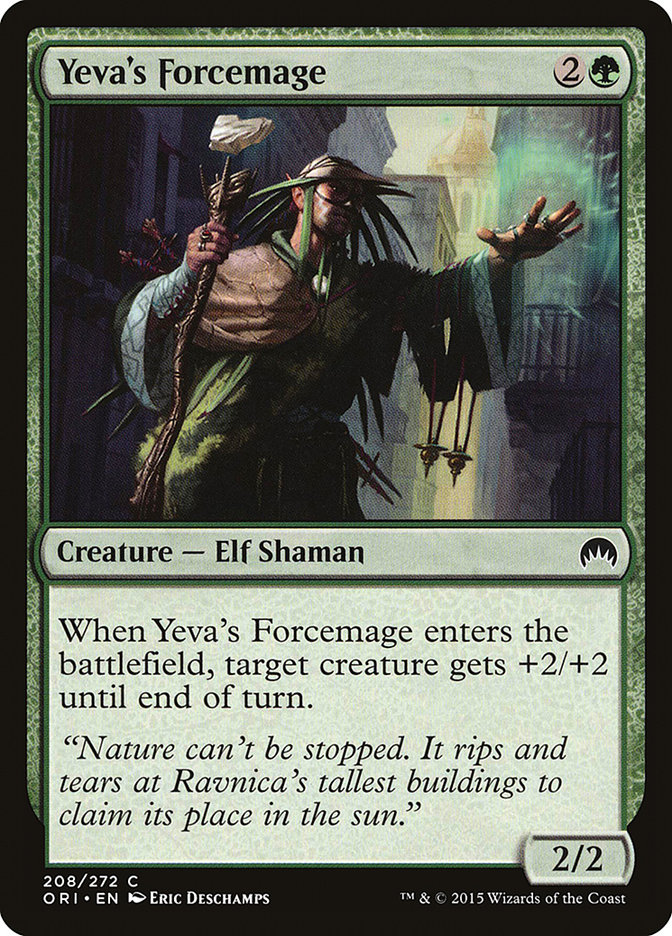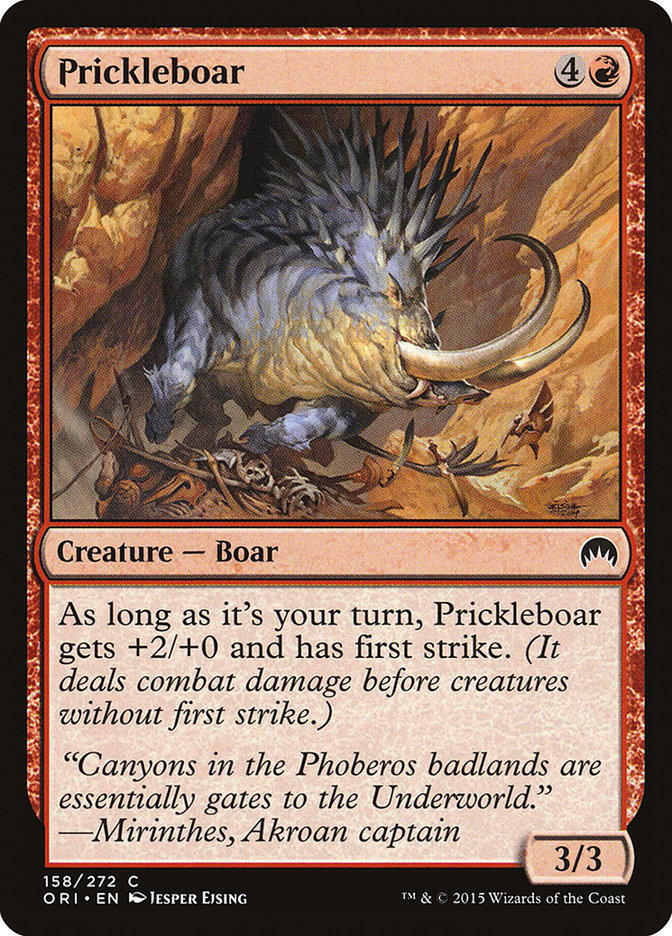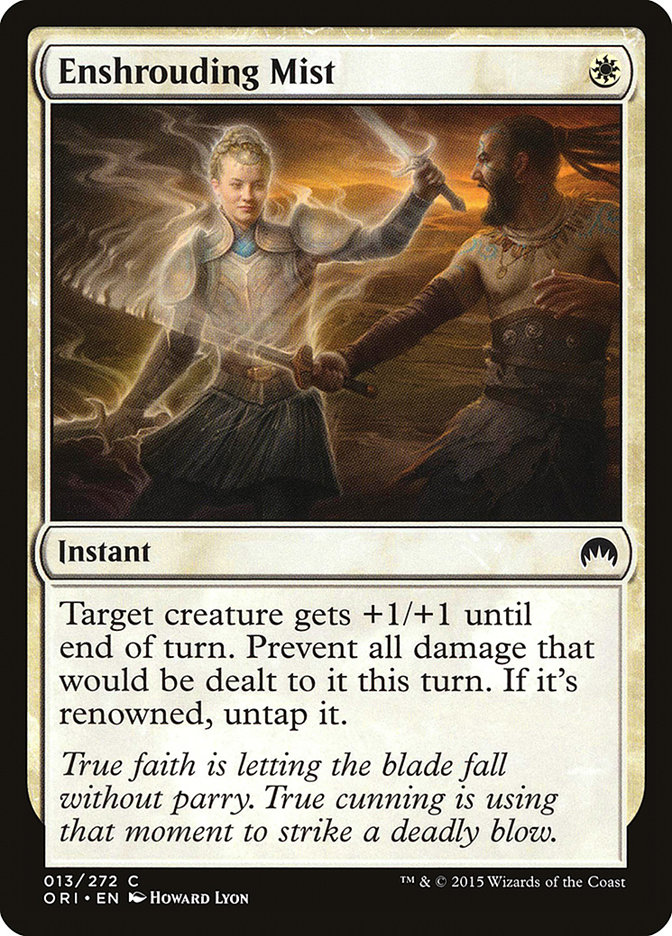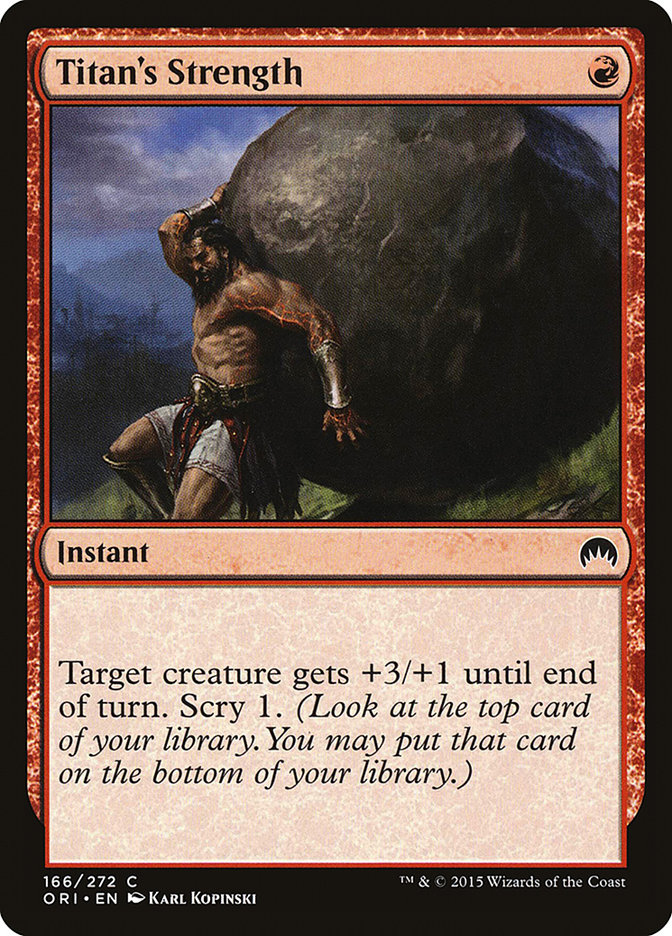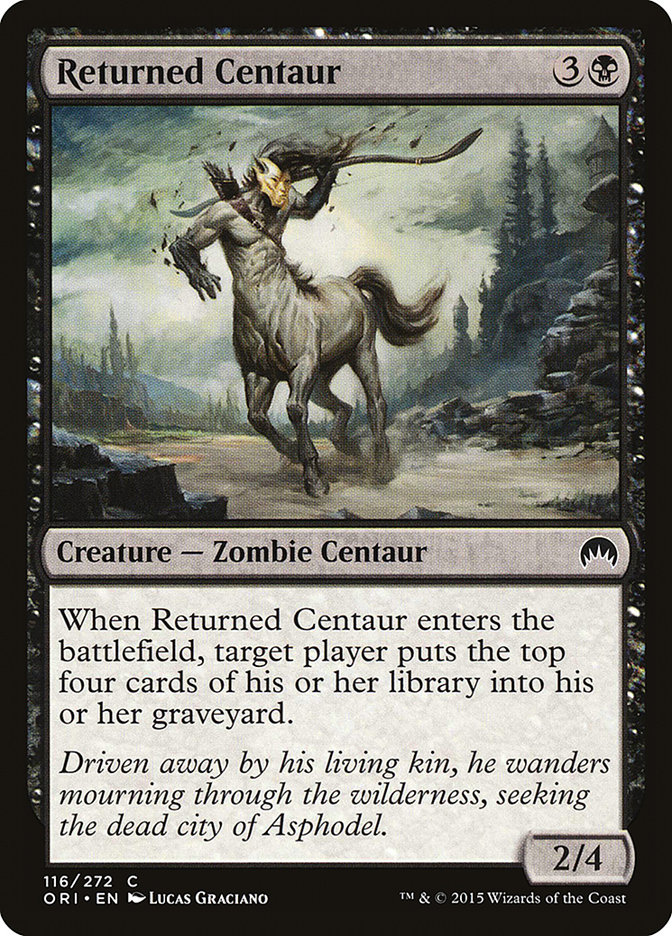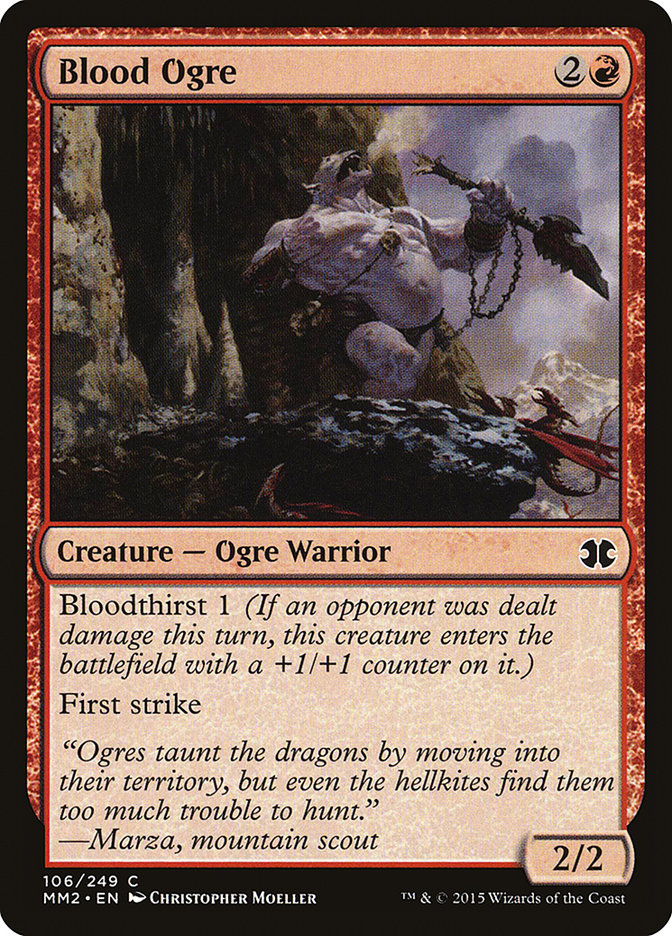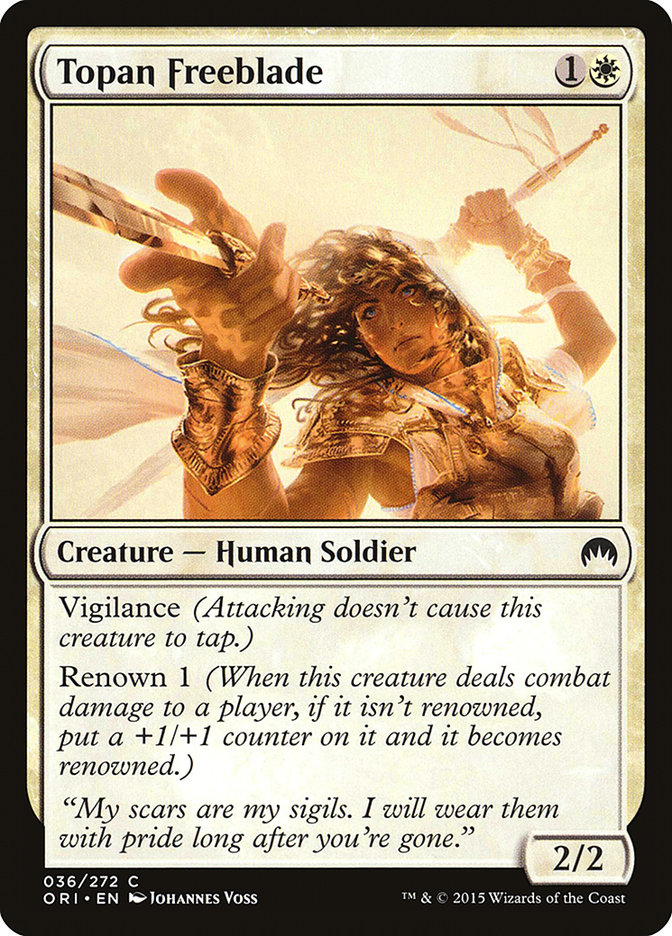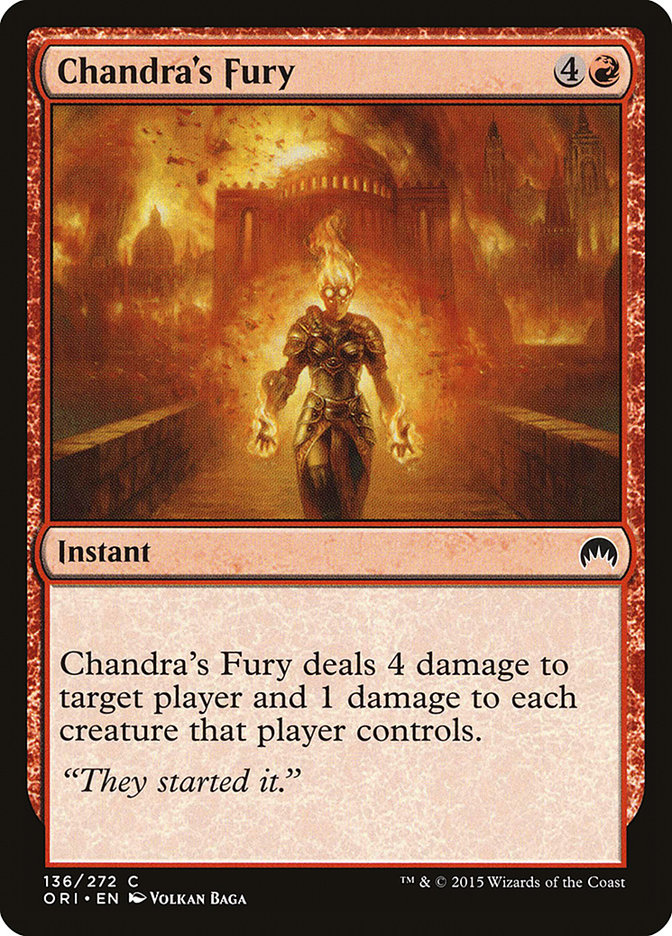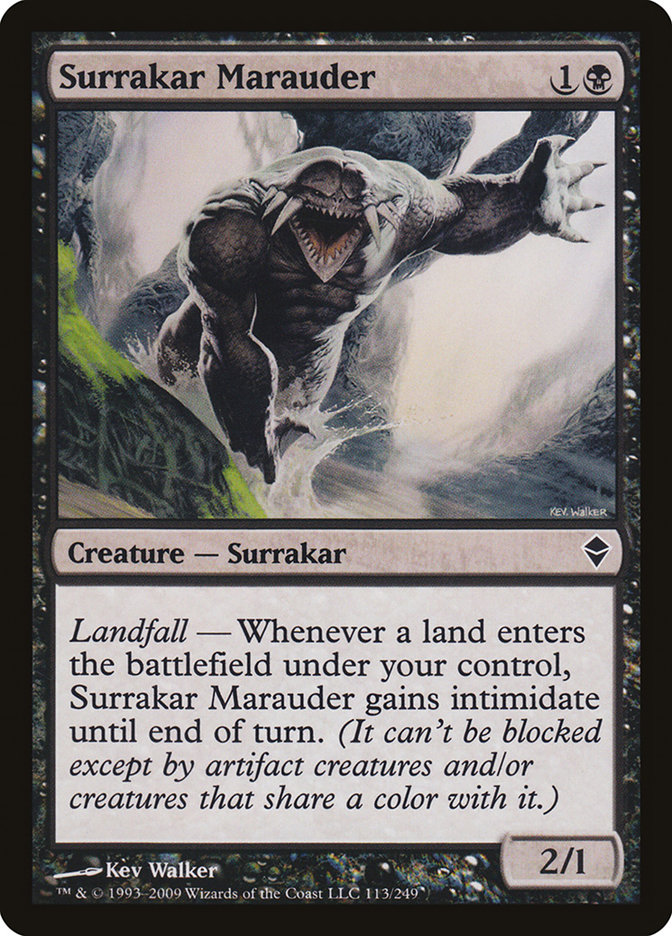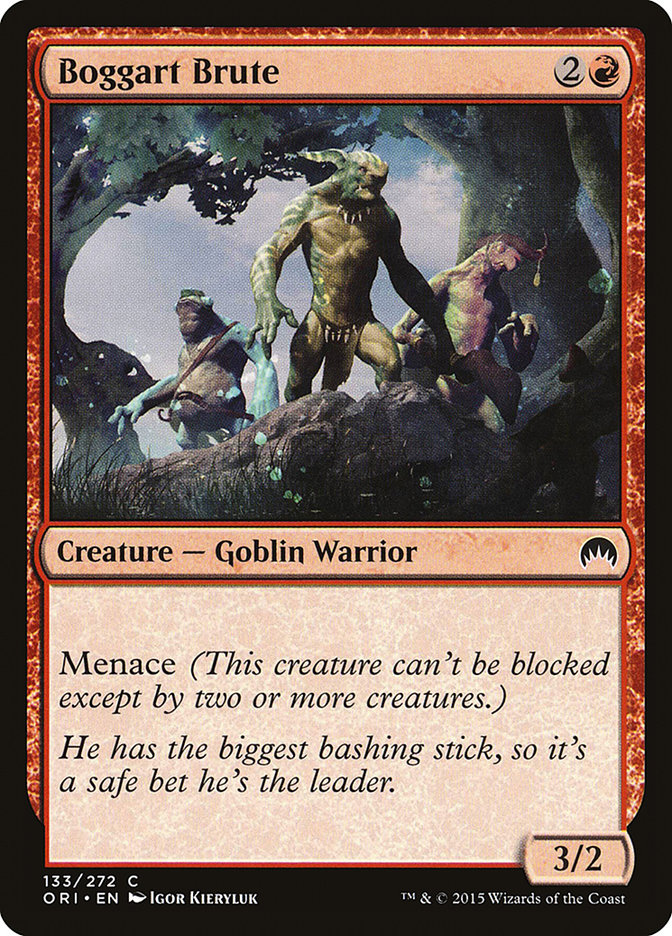This week is an odd dead band in Magic for me. The new set is out, but all my brewing is reserved for Pro Tour testing and there aren’t packs in my hands to open and draft. There aren’t tournament results to pick apart. There’s a Banned/Restricted announcement looming, and the Hall of Fame discussion has already come to nearly running its course.
Rather than try to do a deep dive on any of these topics that aren’t necessarily open or productive to do so on, I’ve opted for a skim of it all.
First Returns: Magic Origins Limited
Going into the prerelease, I held the following beliefs about Magic Origins Limited in large part based on my dive into the format last week.
This is an aggressive format. It hits on both primary characteristics of an aggressive format: it’s hard to play defense, and it’s easy to fall behind.
To go to the history books and talk a bit about both of these traits, we have had three really aggressive formats in the last decade: Zendikar, Gatecrash, and Magic 2012.
Zendikar was aggressive almost entirely because it was hard to play a defensive game in the format. The comment everyone always brings up is Landfall, which basically meant that a lot of creatures were significantly larger when attacking than when they were blocking. This extended beyond Landfall with cards like Timbermaw Larva. Gatecrash had this in the Battalion mechanic.
This style of making blocking bad isn’t extremely prevalent in Magic Origins, but there are traces of it. The lightly-represented Prowess is way better when attacking because leaving your mana up for a spell risks your opponent not walking into your trick and wasting your mana (see also: the classic Rebuke issue). There are a number of temporary enters-the-battlefield pump effects that push attacking like Ampyrn Tactian or Yeva’s Forcemage, and there are a couple attack bonuses like Prickleboar.
The abundance of inexpensive combat tricks is another thing that pushes Magic Origins slightly towards aggression. Even if it is just ending combat with your Grizzly Bear in play and theirs in the graveyard, it’s easy to make a tempo-profitable trade in this format. Even moreso when you consider that the best answer to a 3/3 is often double blocking with two 2/2s. Of course, you can use these tricks defensively as well, but see above about the Rebuke issue. If your opponent doesn’t attack into your one-mana trick, the benefit is a repetition of the game-state which may or may not benefit you. If your opponent doesn’t block into your one-mana trick, the benefit is the very clear: “take X damage,” which almost surely benefits the person attacking.
That isn’t to say there aren’t creatures that are good at blocking in this format, but most of them aren’t very good at attacking. You are committing a full card to blocking that can be circumvented later. Stalwart Aven is one of the few exceptions. That isn’t to say you can’t commit to playing cards like this, just that doing so sends you down a clear control path. Being the midrange deck basically just means you are the aggressive deck with a little more bulk.
The real place Magic Origins hits on the aggressive spectrum is that being ahead leads to being further ahead, mainly through the Renowned mechanic. If you couldn’t block their Renown attacker profitably the first time, it’s only going to get harder to do when it attacks the second time with a +1/+1 counter on it. This is very similar to how Magic 2012 handled the Bloodthirst mechanic, where if you were attacking profitably you were able to play above-par creatures to further your advantage. This is also why the efficient tricks have a bunch of opportunities to leverage an advantage. If you are ahead with Renown, the format has a lot of ways to negate the inherent advantage of blocking. You attack with Topan Freeblade, your opponent is forced to make the “good” block of two 2/2s on it and suddenly they have traded two blockers and four to five mana for your one-mana combat trick. Not only is getting ahead inherent to the format, a lot of the support cards also get significantly upgraded when you are ahead.
If there’s one thing tempering the aggression of Magic Origins, it’s that it’s much harder to break through a stabilized board than in past aggressive formats. The reach is a little worse than it has been in the past. There’s no Overrun, the Falter effect is the uncommon Seismic Elemental, even the Lava Axe only does four instead of five. The cheap fliers are also worse (Wind Drake is not Scrapskin Drake which can’t block early attacks), and the replacement of Intimidate with Menace reduces the number of truly evasive creatures.
Putting this all together, the Sealed games of Magic Origins played out very much as expected. Either one player was buried early and couldn’t recover, or the board stalled and there was a positioning battle of late-game trumps. The latter of these revealed the third reason that the format is biased towards aggression: there aren’t a lot of ways to pull ahead on cards later in the game.
The vast majority of these late-game stalls were decided by one player ending the game with seven land on the battlefield while the other had eleven land and four fewer spells. There were ways to trade with basically everything and it either came down to who had more cards or whoever drew more of the huge trumps and answer half of their deck by turn fifteen. That should sound obvious to anyone familiar with Sealed, but what got me was that there were so few ways to break parity. Almost any kind of card advantage engine or mana sink was absurd. I had Evolutionary Leap in my deck which was a clear winner, and I would assume that had the prerelease packs not come into play, Black would have been a dominant color thanks to Read the Bones.
Note that this is solely for Sealed. As always, in Draft it’s much easier to assemble the tools you want to play a long game and choose a plan for your deck. Also, as a disclaimer, this was prerelease Sealed, where every deck was plus five or so playables. This may homogenize the play experience and remove opportunities to leverage an individual pool’s strengths and weaknesses.
What does this all mean for building your Magic Origins Sealed deck at Grand Prix Dallas or any other upcoming event?
If you don’t have a critical density of two-drops, you will lose. Being on the play and hitting your three-drop is similar, but if you are on the draw against Topan Freeblade without a two-drop the game is basically over. Four is a reasonable number, and I think three is the bare minimum. There are probably exceptions where you have enough good blockers on three or four mana to skimp on twos, which most likely entail playing G/B. If you are playing six or more two-drops you had better be committed to aggression.
Even mediocre card draw like Artificer’s Epiphany is a big game. Just maindeck your Sphinx’s Tutelage or Zendikar’s Roil if you don’t plan on killing your opponent on turn six. You will not regret having a real end-game trump to draw to.
Magic Origins Constructed Trends
As mentioned at the top, I’ve already gotten started going deep on Standard testing for Pro Tour Magic Origins. As a result, I’m playing it close to the chest with commentary on the format beyond results analysis. Seeing as those results don’t come in until next week, this is the best I’ve got.
I’m not going to tell you which of these cards is actually good, but let’s go over the cards that are receiving a lot of immediate hype.
Standard right now (and last year as well) has a lot to do with finding the right answers for the threats that are being played, and in turn finding the right threats to turn them into wrong answers. At Pro Tour Dragons of Tarkir, we saw Silumgar’s Scorn level a metagame of Thunderbreak Regents by stopping them for less mana before they hit the board to trigger their three damage.
Let’s just look at the marquee cards of the set:
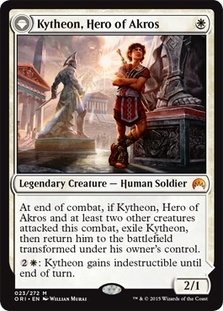
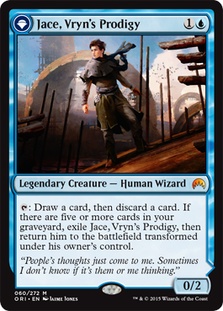
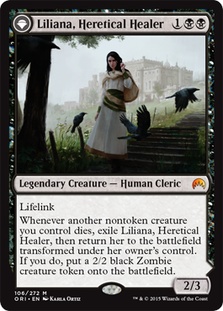
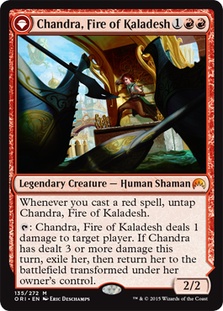
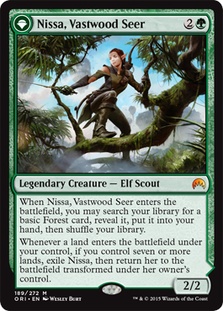
Now let’s look at the existing answers in the format.

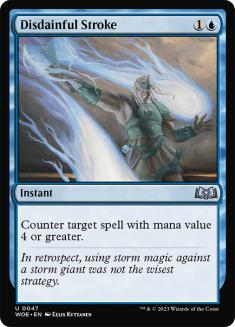
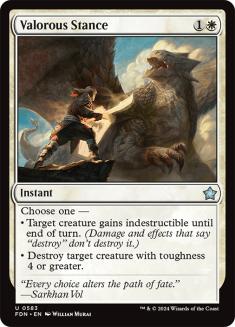
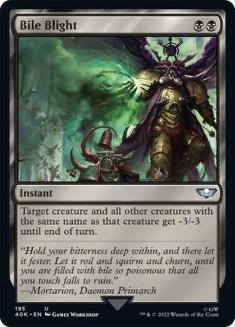
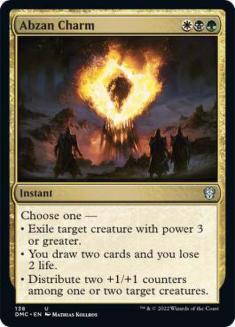
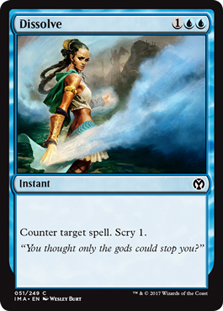
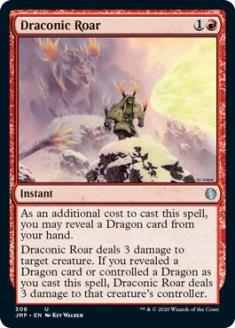
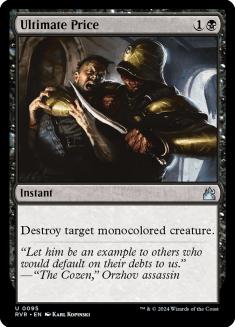
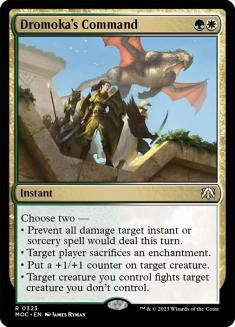
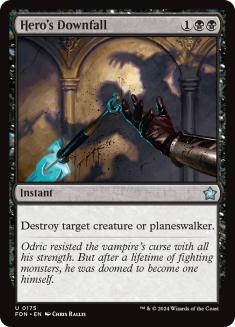
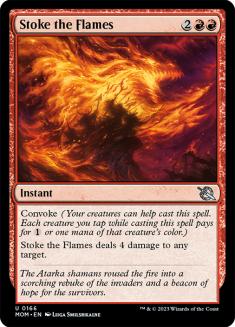
It shouldn’t be hard to figure out which of these are winners and which are losers solely based on the problem presented: threats that cost three mana or less and which have to be killed fairly quickly to avoid them generating planeswalker card advantage. You might be slightly better off trying to Dissolve Nissa than you are trying to Dissolve Kytheon, but the end result is you should probably be targeting both with Ultimate Price.
As an aside: here is your Modern WotC design philosophy lesson of the day. Your marquee character cards better be flashy and interesting. Pretty sure this has come up multiple times lately on CEDTalks as well. To use the Versus System example:
Non-player: “Oh, so is Wolverine or Superman the best card?”
Pro: “Well, neither is actually good, Doctor Light was until he was banned. Ahmed Samsarra probably is now.”
Non-player: “Uhhh, who?”
Pro: “Yea, I don’t know either.”
So this is why they don’t make cards like Gerrard Capashen anymore and instead make Jace, the Mind Sculptor.
Getting Worse By Getting Better
I’ve found myself making a lot more bad plays by trying to make good ones.
Oh, I should sandbag this land to bluff a trick. Oh wait, I needed to play it so that I could not tap my Swamp to play this trick and play my two-drop post-combat. Or I needed to get it out of my hand so if my opponent top decked Mind Rot I could then draw my six-drop and play it. Or really whatever. Play around the random trick that blows me out? There’s just a sequence of normal, non-trick cards that wins the game that I didn’t think about.
I got sick of it and stopped doing things like that. All those common lines about making the “smart” play are really overrated. Just make the best play for your cards and most of the time you are going to be right. Know the cards in the format and your opponent’s deck and you can make even better calls.
My opponent attacks. What if they have Celestial Flare? Well, can I play around that for the rest of the game or not? I had a situation at the prerelease where I realized I could. If I wasn’t sure, the right answer is probably just make the generic good play that wins the game.
Don’t try to make shortcut “good” plays until you know why you are making them. The bad shortcut could easily be just as incorrect as ignoring the “better” line.
The Hall of Fame
I’m not going to get into the gritty details of who is in and who is out among the top candidates. We are still discussing people from either just before my Pro Tour era or who were leaving as I was coming in, so I don’t have a good picture beyond having watched coverage. Many others who were on the Pro Tour that whole time have given many well-educated perspectives.
How do you handle someone who is in theory “one result away” from being a lock? Many people argue that event results are fickle, and that “one more result” could easily have been a near miss that broke the wrong way.
To some extent that should resonate with me. Maybe it’s a tiebreaker coin flip or two that went the wrong way, the one bad matchup in the last round bracket, getting paired against someone who could scoop based on record but couldn’t due to outside factors, and suddenly a Top Eight is a Top Sixteen.
But I take the opposite view. Would that person even be in the discussion if they had one result less should also be considered here? Downgrade their worst Top Eight finish to a Top Sixteen and judge. Is that in turn “one result away” or close to it, or are they one unlucky break from having been well outside of borderline?
That’s probably a good metric for anyone. If you can subtract a result and they would still be a contender, they should probably be in. If you subtract a result and can say this is someone people would bring up as just waiting for it, then they should be in strong contention. If you can’t do either, then you are better off waiting.
Bans And Restrictions
This article is being written twelve hours before the announcement. I’ll start with the philosophy I would hold on each format here, then add a retrospective on my opinion once a decision has been released.
I’m going to mostly ignore the deep Eternal formats as those are basically a wash. There isn’t a ton of data to work with on any decision. Sensei’s Divining Top is at slight risk in Legacy, and Vintage is likely to see one to three changes with Champs coming up and the format steadily showing that Dig through Time and Shops are similar to Cruise and Shops at this time last year.
Normally, I would expect a straight no Modern bans for this announcement. Bans and restrictions are a resource to provide a new challenge for a big event. Except there is a big event coming up: Worlds.
While it’s only 24 people playing four rounds of the format, it looks real bad if you just have to show people getting Draw Seven’d out on turn two or attacked for 48 when you knew that was a thing going into the event. I expect Amulet of Vigor and Goryo’s Vengeance are near the chopping block, with the only saving grace for Goryo’s Vengeance being that it is a newer break and hasn’t shown nearly the results Amulet Bloom has. That said, it should be obvious after only a few games with the deck that it isn’t remotely reasonable. I personally would rather see Griselbrand go from the format as that card is absurdly broken and likely will also eventually be gone, but it’s more likely that there is some crazy legend printed in the near future than another Goryo’s Vengeance so the old card will take the fall like Survival of the Fittest did. The same logic applies to banning Amulet of Vigor over Summer Bloom.
The big question in my mind is if there is going to be an unbanning to go along with this. My assumption is that there will not be and that development will be saved for the Pro Tour. The reason for this is that another round of bans before the Pro Tour would be really bad. There’s only so many subtractive changes that people are willing to take before they get really upset about the format being jerked around. Additive changes on the other hand are usually met with excitement, similar to new cards being printed. When you change decks after an unbanning, it’s because you have evaluated your previous option is no longer the best and not because some external party took your toys away.
Post Announcement Thoughts
No ban is also reasonable. As per above, you have to save your shots on the ban cannon and this is only four rounds of Swiss at one event. You can easily sculpt your narrative by selecting different matches and decks to feature, especially if like last year Modern is early on the schedule.
Another possibility is that WotC is going to pull a 180 and not have Modern at Worlds for the first time ever. It’s also possible a meteor hits PAX and similarly prevents the format from being played.
Honestly, this makes me happy. If I want to cast Nourishing Shoal, I can. More realistically, I can now focus entirely on Standard. Thanks WotC for not banning anything and not making me worry about the distant future of August! Time to spend a weekend scrapping the results of the upcoming Open Series in Chicago for the Pro Tour and living under the assumption that I’ll be drawing 35 cards to win the game in a month.

